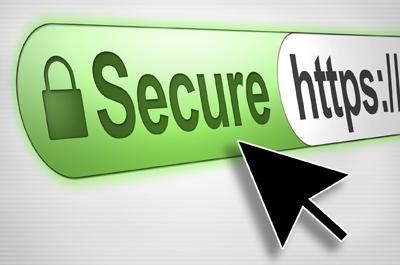
Five Steps For Website’s Security
Since the evolution of time, mankind is on a quest to find shelter either to protect himself from wild animals or to protect himself from the climate.
With the advancement in technology; the quest has changed but not ended. In fact, we need to protect ourselves today more than ever.
The current technology without any doubt has made our lives simpler. But it has also opened a completely new window for many crimes. Cybersecurity awareness and then implementation has become vital for our existence. This is where proactive security comes in. Proactive = Preparing for the coming change.
This guide will reason out why you need to secure your website better. It will also tell you five key aspects to level up your security game.

What is Website Security?
The measures one takes to secure his website from all the cyberattacks to ensure a completely safe and secure website for the host as well as the user come under the umbrella that is “Website Security”.
Website security is an ongoing process. One can’t just lock it safe once and assume its safety forever. We need to continuously check, update and enhance our security measures. The security measures that were suitable five years ago won’t suffice today. Or the security measures that are working magic today might be an outdated solution in the future.
All the websites online needs to harden its security. To ensure no hackers can invade your website’s security one needs to add more and more layers of protection to reduce cybercrime against your site.
Importance of Website Security:
When you take steps to increase your website’s security you are not only protecting your data but also giving assurance to protect your users’ data as well.
By hardening your website security you can increase the site’s traffic as well. You are protecting the operating system of your device, ensuring full safety for your and your users’ database and web servers.
What am I fighting against?
When you harden your website security, you are fighting against all the cybercrimes that invade your data privacy, you are creating a depth of defence which is a multiple level control of the attack. You also secure all the security domains and potential vectors of the attack by accounting the breadth of the attack.
The following picture depicts CVE details of the top CMS – WordPress, Joomla & Magento. You will see that in all these cases, XSS remains the most threatening attack vector.
The following CMS specific security guides shall help you in protecting your website against most cyberthreats.
- Ultimate Guide to WordPress Security
- Ultimate Guide to Joomla Security
- Ultimate Guide to Magento Security
How Can I Increase The Security Of My Website?
It has already been established that there is no way we can overlook the security of our sites. How dangerously it can impact our device and data.
So to have a secure network, Astra; presents you the step by step guide to hardening your website security. Just by these 5 step security procedure, you will protect your web servers from all the potential hacking.
1. Security Plugins
Every platform has inherent security vulnerabilities, which thus leads to many hacking attempts that weakens your website.
If you have developed your website with a content management system (CMS), then you can prevent your website from many hacking attempts by using the inbuilt security plugins which are available in CMS.
Seeing the importance of securing your sites, most of the CMS security plugins are free of cost.
2. Update Website Platform
Most of the attacks online are done by Bots, which means they are automated. Hence it becomes very important to update your site as soon as a new CMS version is launched; giving no time for automated hackers to find cracks to exploit in your sites.
2.1) Use HTTPS:
While updating your website make sure you are using HTTPS which provides assurance to the users that you are have secured network and it is safe to use your website.
2.2) Update Passwords:
Try to change passwords every alternate month, since you are the admin of the website, hackers use admin’s password to exploit users or the website’s data. So, it is essential to keep on updating your password.
3. Limiting access:
You can do 10 things to protect your website but you can still be attacked by the user’s platform. Follow these three steps to ensure no hacker can backtrack to your website.
3.1) Using One Site:
Using the same server for hosting multiple websites can seem cost-effective at first but it opens a large platform for hackers to hack all the websites at once. It is essential to use only one server for one host.
3.2) Granting File permission

Limiting file activities to a certain set of people can limit the number of users which instead limits the number of IP addresses working on your website. Limiting the user access will not affect your website traffic, it will provide safety against the users who are just there to look.
Each file is responsible to do three activities which can be represented by numbers.
1. Read(4): Represented by 4. Can view the file and its content.
2. Write(2): Represented by 2. Have permission to change the website’s content.
3. Execute(1): Represented by 1. Can run the file’s script of program.
3.3) Security defence to your server
Your website can be hosted on many servers such as Windows IIS, Apache, NGINX etc. It is important to add defence security to the servers. You can increase the security by:
1. Directory browsing: Limiting malicious users from exploiting the content of every directory present on the site.
2. Image Hotlinking: Not letting other websites to display images from your server, since if other sites start hotlinking the pictures, the bandwidth allowance of your hosting plan will get exhausted by some other website.
3. Secure Sensitive file: Files like CMS configurations files are very sensitive files and to ensure complete safety to such files you can set rules and multi-level passcode systems or restrict PHP extensions to upload the system.
4. Implement SSL

If your website is responsible for sensitive data transactions between the site and the user; you need to get Secure Socket Layer (SSL) for your websites. SSL encrypts data between the host and the client. SSL ensures that the data can’t be intercepted, misplaced or stolen by the hackers.
SSL certificate guarantees your users and your website’s data privacy. Make sure your site has this certificate before launch.
5. Monitor Every Move
Scanning the website to ensure the integrity of the server and the applications will allow you to be one step ahead of the potential hackers.
Alerting the process will also increase the response time and controls damage against any kind of breach.
Checks and scans keep updated about any kind of security compromise made to your website. So, it is required to run a quickMonitor Every Move scan every month.
Protecting Your Website Is Not Easy
Practicing all the steps to ensure the safety of your website is not an easy task!
With the new software launching every month it is difficult to keep up with all these changes and manage your site. But, if you diligently follow the above mentioned steps & guides, I am sure you will have a secure website and a safer experience!
If you liked this blog post, share with your friends and become a part of the larger security campaign.


 CyberSecurity: Why Is It Important Now than Ever
CyberSecurity: Why Is It Important Now than Ever  Content Samurai Review – Video Maker Online With Music And Effects
Content Samurai Review – Video Maker Online With Music And Effects  Web Security: Astra Security Suite Review
Web Security: Astra Security Suite Review  Rocketlink Review On Best Custom Branded URL Shortener Service
Rocketlink Review On Best Custom Branded URL Shortener Service 